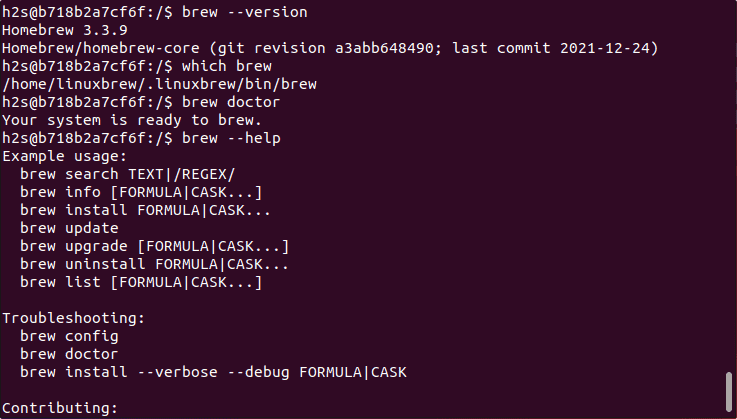

- BREW CASK UPDATE HOW TO
- BREW CASK UPDATE INSTALL
- BREW CASK UPDATE UPDATE
- BREW CASK UPDATE UPGRADE
- BREW CASK UPDATE FULL
Once you’ve tapped into the repository, you can install the package using either the brew command or the brew cask command, depending on whether it’s a command-line utility or a GUI app. To install a package from another repository, use the following syntax: Installing Packages from Other RepositoriesĮven though Homebrew covers a wide range of packages, there are several other packages (command-line tools and GUI apps) that the package manager doesn’t offer.įor such instances, it does, however, provide the tap functionality, which lets you tap into (or access) other repositories so you can install packages on them to your Mac. If you want to see an entire list of Homebrew Cask apps, check out Homebrew Cask Formulae.įor upgrading an existing Homebrew package:īrew cask uninstall package_name 3. Below are some Homebrew Cask commands to help you with installing and uninstalling GUI apps/casks.įor a simple app lookup in the Homebrew Cask library, run: Unlike installing regular packages (or command-line tools), installing graphical apps with cask requires you to use a slightly different set of commands.
BREW CASK UPDATE UPGRADE
When you want to upgrade a package to its latest version:īrew uninstall package_name 2. If you want to learn more about any package, check out Homebrew Formulae. To do this, open the Terminal app and run your commands using the following syntaxes. If you want to install a command-line utility/formulae on your Mac with Homebrew, you’ll need to use brew. Installing Command-Line Utilities With Homebrew Note: Homebrew packages are referred to as formulae, whereas Homebrew Cask apps are called casks.ĭepending on what package you want to install on your Mac - command-line utility or graphical app - you’ll need to either use Brew or Brew Cask for the installation. Once the Homebrew prerequisites are addressed, you’re now ready to install packages (utilities and apps) on your Mac.
BREW CASK UPDATE HOW TO
Xcode-select -install How to Install Packages With Homebrew
BREW CASK UPDATE FULL
If you’re running low on disk space or don’t wish to install the full app, you can install only its essential (command-line) utilities that are required by Homebrew by running: Next, make sure you have Xcode installed on your Mac. However, if you don’t have Homebrew on your system, use the following commands to install it:
BREW CASK UPDATE UPDATE
In this case, make sure to update it to the latest version by running: If it returns a path, it means Homebrew is available on your system. To verify if Homebrew is present on your system, open the Terminal app and run: Homebrew comes preinstalled on macOS, so unless you’ve uninstalled it yourself, you should have it on your Mac. Read More Prerequisites for Using Homebrew

There are several advantages to using Homebrew for managing utilities and apps on your Mac. So you can use it when you want to install, update, or remove graphical apps on your Mac, such as Google Chrome, VLC, Spotify, Atom, etc.Īll your installed Homebrew packages live under /usr/local/Cellar and are linked to /usr/local/bin to make it easier for you to find and launch GUI-based apps right from the Applications directory, just like any other GUI app on your Mac. Not just that, Homebrew also has an extension, called Cask (or Homebrew Cask), to help you with the management of GUI-based apps. It allows you to install, update, and remove programs (apps/utilities) on your Mac right from the command-line and provides access to various command-line utilities, including git, wget, nvm, and openssl. Homebrew is a free and open-source package manager for macOS and Linux operating systems.


 0 kommentar(er)
0 kommentar(er)
